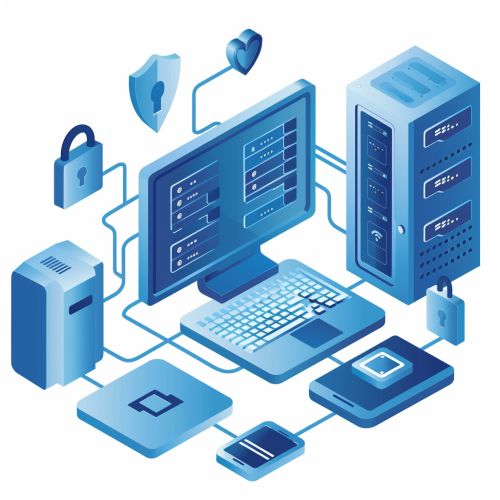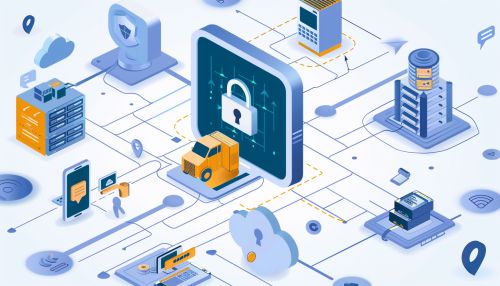Application Security
Introduction
Application security encompasses measures taken to improve the security of an application often by finding, fixing, and preventing security vulnerabilities. It is a critical aspect of software development and deployment, ensuring that applications are protected from threats and vulnerabilities that could compromise data integrity, confidentiality, and availability.
Importance of Application Security
Application security is essential due to the increasing reliance on software applications in various domains, including finance, healthcare, and government. As applications become more complex and interconnected, they become more susceptible to cyber threats such as malware, phishing, and denial-of-service attacks. Ensuring robust application security helps protect sensitive information, maintain user trust, and comply with regulatory requirements.
Common Vulnerabilities
Applications can be vulnerable to a wide range of security issues. Some of the most common vulnerabilities include:
Injection Attacks
Injection attacks occur when untrusted data is sent to an interpreter as part of a command or query. The most common types are SQL injection, cross-site scripting (XSS), and command injection. These attacks can lead to unauthorized access, data breaches, and system compromise.
Broken Authentication and Session Management
Weak authentication mechanisms and improper session management can allow attackers to impersonate legitimate users. This can lead to unauthorized access to sensitive data and functions. Common issues include weak passwords, session fixation, and cross-site request forgery (CSRF).
Sensitive Data Exposure
Applications often handle sensitive data such as personal information, financial data, and health records. Failure to protect this data through encryption and secure storage can lead to data breaches and privacy violations.
Security Misconfiguration
Security misconfiguration occurs when security settings are not defined, implemented, or maintained properly. This can include default configurations, incomplete configurations, and open cloud storage. Misconfigurations can provide attackers with easy access to sensitive data and systems.
Insecure Deserialization
Insecure deserialization occurs when untrusted data is used to abuse the logic of an application, leading to remote code execution, denial-of-service attacks, and other malicious activities. This vulnerability is often found in applications that use serialized objects for data exchange.
Application Security Best Practices
Implementing best practices in application security can significantly reduce the risk of vulnerabilities and attacks. Some key practices include:
Secure Coding
Secure coding involves writing code that is resilient to attacks. This includes validating input, using parameterized queries, and avoiding the use of insecure functions. Adopting secure coding standards and guidelines, such as those provided by OWASP, can help developers create more secure applications.
Regular Security Testing
Regular security testing is essential to identify and remediate vulnerabilities. This includes static analysis, dynamic analysis, and penetration testing. Automated tools and manual testing should be used to ensure comprehensive coverage.
Secure Development Lifecycle (SDL)
Integrating security into the software development lifecycle (SDL) ensures that security is considered at every stage of development. This includes threat modeling, secure design, code reviews, and security testing. Adopting an SDL framework, such as Microsoft's SDL, can help organizations build more secure applications.
Patch Management
Keeping software and dependencies up to date is crucial for maintaining security. Regularly applying patches and updates helps protect against known vulnerabilities and exploits. Organizations should have a robust patch management process in place to ensure timely updates.
Access Control
Implementing strong access control mechanisms helps prevent unauthorized access to applications and data. This includes using role-based access control (RBAC), multi-factor authentication (MFA), and least privilege principles. Proper access control ensures that users only have access to the resources they need.
Application Security Tools
There are various tools available to help organizations improve application security. These tools can be categorized into several types:
Static Application Security Testing (SAST)
SAST tools analyze source code for security vulnerabilities without executing the code. They help identify issues early in the development process, allowing developers to fix them before deployment. Popular SAST tools include SonarQube, Checkmarx, and Fortify.
Dynamic Application Security Testing (DAST)
DAST tools test running applications for security vulnerabilities by simulating attacks. They help identify issues that may not be apparent in the source code, such as configuration errors and runtime vulnerabilities. Common DAST tools include OWASP ZAP, Burp Suite, and Acunetix.
Interactive Application Security Testing (IAST)
IAST tools combine elements of both SAST and DAST by analyzing applications in real-time during execution. They provide more accurate and comprehensive results by monitoring application behavior and identifying vulnerabilities. Examples of IAST tools include Contrast Security and Veracode.
Runtime Application Self-Protection (RASP)
RASP tools protect applications from attacks in real-time by monitoring and analyzing application behavior. They can detect and block malicious activities, providing an additional layer of security. Notable RASP tools include Imperva and Signal Sciences.
Emerging Trends in Application Security
As the threat landscape evolves, new trends and technologies are emerging in the field of application security. Some of the most notable trends include:
DevSecOps
DevSecOps is the integration of security practices into the DevOps process. It emphasizes collaboration between development, operations, and security teams to ensure that security is considered throughout the software development lifecycle. DevSecOps aims to automate security processes, improve communication, and reduce the time it takes to identify and remediate vulnerabilities.
Artificial Intelligence and Machine Learning
Artificial intelligence (AI) and machine learning (ML) are being increasingly used to enhance application security. These technologies can help identify patterns and anomalies in large datasets, enabling more accurate detection of threats and vulnerabilities. AI and ML can also be used to automate security tasks, such as threat hunting and incident response.
Zero Trust Architecture
Zero Trust Architecture (ZTA) is a security model that assumes that threats can exist both inside and outside the network. It requires strict verification of every user and device attempting to access resources, regardless of their location. ZTA emphasizes continuous monitoring, least privilege access, and micro-segmentation to minimize the attack surface.
Container Security
As the use of containers and container orchestration platforms like Kubernetes grows, securing these environments becomes increasingly important. Container security involves ensuring the integrity of container images, securing the container runtime, and implementing network security controls. Tools like Aqua Security and Twistlock are commonly used to enhance container security.
Challenges in Application Security
Despite the advancements in application security, organizations still face several challenges:
Complexity
Modern applications are complex, often consisting of multiple components, microservices, and third-party libraries. This complexity makes it difficult to identify and remediate vulnerabilities, as well as to ensure consistent security practices across the entire application.
Rapid Development Cycles
The demand for rapid development and deployment of applications can lead to security being overlooked or deprioritized. Agile and DevOps methodologies emphasize speed and continuous delivery, which can result in security vulnerabilities being introduced and not adequately addressed.
Skill Shortages
There is a significant shortage of skilled security professionals, making it challenging for organizations to build and maintain robust application security programs. This skill gap can lead to inadequate security practices and increased risk of vulnerabilities.
Evolving Threat Landscape
The threat landscape is constantly evolving, with new vulnerabilities and attack techniques emerging regularly. Keeping up with these changes and ensuring that applications are protected against the latest threats is a continuous challenge for organizations.
Conclusion
Application security is a critical aspect of modern software development, ensuring that applications are protected from threats and vulnerabilities. By understanding common vulnerabilities, implementing best practices, and leveraging security tools, organizations can significantly reduce the risk of security breaches. As the threat landscape continues to evolve, staying informed about emerging trends and addressing the challenges in application security will be essential for maintaining robust security postures.


